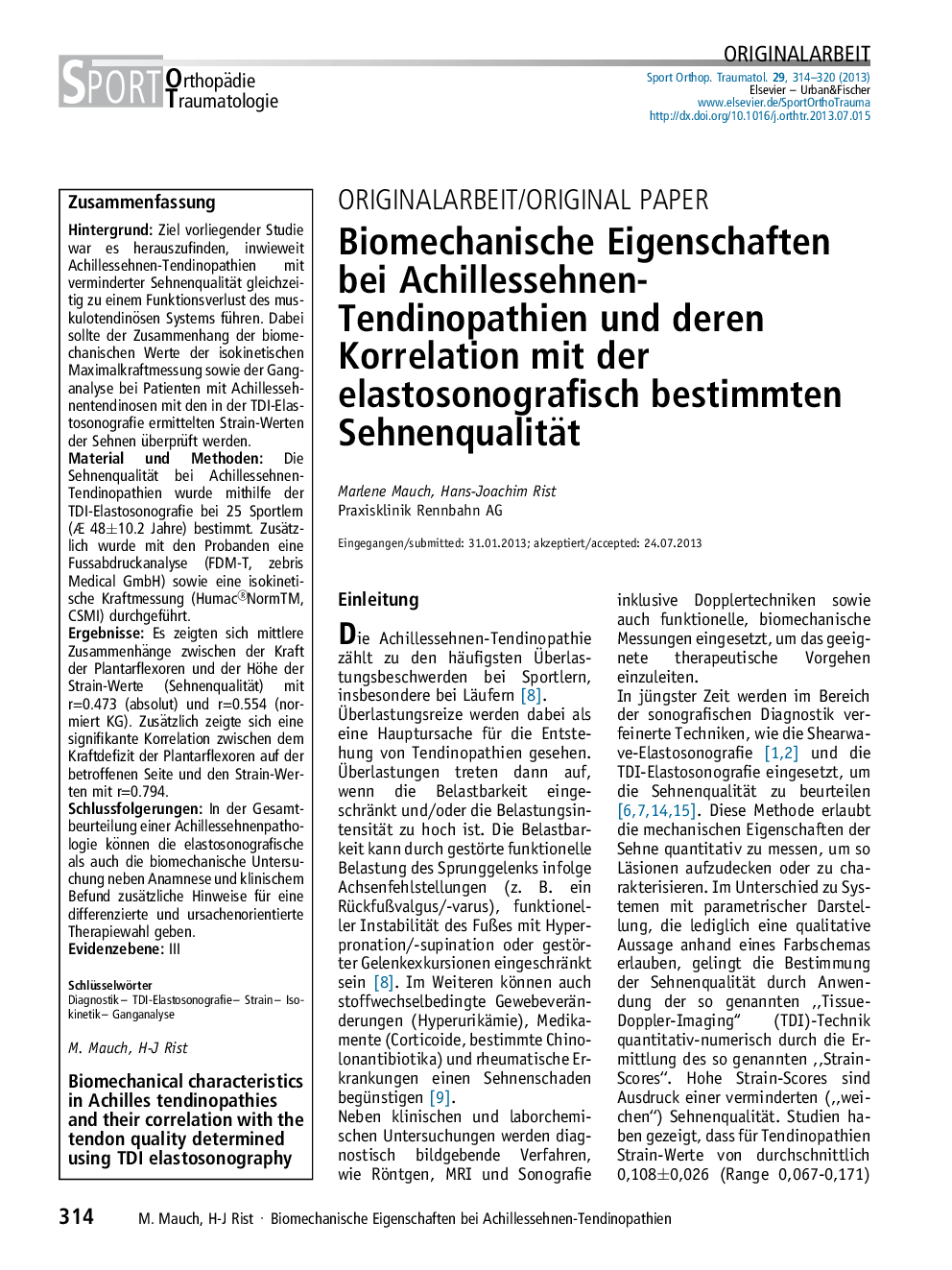| Article ID | Journal | Published Year | Pages | File Type |
|---|---|---|---|---|
| 2740346 | Sports Orthopaedics and Traumatology | 2013 | 7 Pages |
ZusammenfassungHintergrundZiel vorliegender Studie war es herauszufinden, inwieweit Achillessehnen-Tendinopathien mit verminderter Sehnenqualität gleichzeitig zu einem Funktionsverlust des muskulotendinösen Systems führen. Dabei sollte der Zusammenhang der biomechanischen Werte der isokinetischen Maximalkraftmessung sowie der Ganganalyse bei Patienten mit Achillessehnentendinosen mit den in der TDI-Elastosonografie ermittelten Strain-Werten der Sehnen überprüft werden.Material und MethodenDie Sehnenqualität bei Achillessehnen-Tendinopathien wurde mithilfe der TDI-Elastosonografie bei 25 Sportlern (Æ 48±10.2 Jahre) bestimmt. Zusätzlich wurde mit den Probanden eine Fussabdruckanalyse (FDM-T, zebris Medical GmbH) sowie eine isokinetische Kraftmessung (Humac®NormTM, CSMI) durchgeführt.ErgebnisseEs zeigten sich mittlere Zusammenhänge zwischen der Kraft der Plantarflexoren und der Höhe der Strain-Werte (Sehnenqualität) mit r=0.473 (absolut) und r=0.554 (normiert KG). Zusätzlich zeigte sich eine signifikante Korrelation zwischen dem Kraftdefizit der Plantarflexoren auf der betroffenen Seite und den Strain-Werten mit r=0.794.SchlussfolgerungenIn der Gesamtbeurteilung einer Achillessehnenpathologie können die elastosonografische als auch die biomechanische Untersuchung neben Anamnese und klinischem Befund zusätzliche Hinweise für eine differenzierte und ursachenorientierte Therapiewahl geben.EvidenzebeneIII
BackgroundThe aim of this study was to assess the correlation of the (reduced) quality of tendons in Achilles tendinopathy and the efficiency of the muscle-tendon system. Thereby the biomechanical variables of the isokinetic strength as well as the gait analysis in patients with Achilles tendinopathy were correlated to the strain scores of the TDI elastosonography.Materials and MethodsThe tendon quality in Achilles tendinopathies was determined using the TDI elastosonography in 25 athletes (Æ 48±10.2 years). Additionally, a plantar pressure analysis (FDM-T, zebris Medical GmbH) as well as an isokinetic strength test (Humac®NormTM, CSMI) was conducted with the subjects.ResultsThere were moderate correlations between the strength of the plantar flexors and the amount of the strain scores (tendon quality) with r=0.473 (absolut) und r=0.554 (normalized KG). Additionally, there was a significant correlation between the strength deficit of the plantar flexors on the injured side and the amount of the strain scores with r=0.794.ConclusionsNext to the anamnesis and clinical finding the elastosonography as well as the biomechanical examination can be used in a comprehensive assessment of Achilles pathology to provide additional information for a differentiated and cause related choice of therapy.Level of Evidence: III
